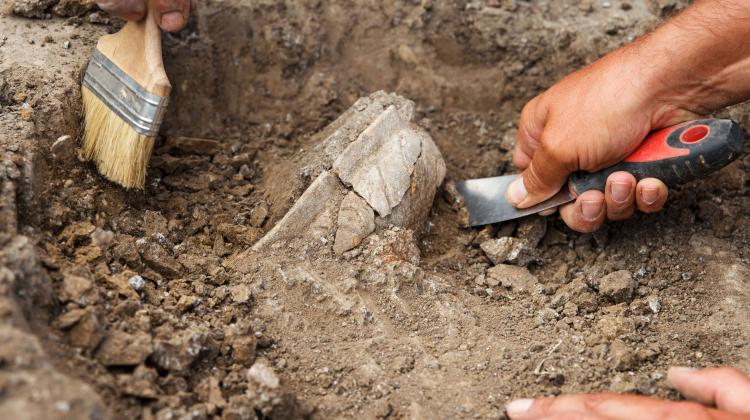Farmer Finds Roman Treasure Trove Scattered Across Field
A farmer has discovered one of the largest hauls of Roman coins to ever be found in Poland.
Mariusz Dyl had been looking for abandoned antlers in a field near Cichobórz, south of Hrubieszów, Lublin, when he stumbled upon the 2,000-year-old coins scattered across 100 metres of the field.
After calling in experts, the 1,753 coins weighing 5.5kg and which were found in 2019, were taken to the Hrubieszów Museum where they have now been analysed and their authenticity confirmed.
Director of the Museum Bartłomiej Bartecki said: “This is undoubtedly the largest treasure from the Roman period in the Lublin region and one of the largest found in Poland so far.
“We went to the place and together with a team of archaeologists and volunteers, including Mr. Dyl, we continued excavations around the discovery site.”
According to Bartecki, all the coins, had been originally placed in a wooden box or leather pouch. While the remains of the container have not survived, it is known that it was decorated with silver-plated bronze rivets.
The oldest denarii bear the image of the Roman emperor Nerva, and the latest - Septimius Severus. “We can therefore conclude that the coins were minted over a period of about 100 years, from the end of the 1st to the end of the 2nd century AD,” says Bartecki.
In the 2nd century AD, the region of present-day Lublin was inhabited by the Vandals. They were driven out by the Goths, who began the 'great journey' from Scandinavia to Southeast Europe at the end of the 2nd and the beginning of the 3rd century AD.
Bartecki said: “There were many battles. We know numerous Vandal cemeteries from this period, where warriors with ritually destroyed weapons were buried.
“Perhaps the Vandals hoped that they would return to their lands in the near future, so they decided to bury the coins. But they were wrong.”
Goth expert Professor Andrzej Kokowski from the Institute of Archaeology, Maria Curie-Skłodowska University in Lublin, added: “The situation of Vandals withdrawing, or rather fleeing from the Goths, was so bad that they were hiding everything of value. It seems that it was here that the Vandals lost the means to fight!”
According to Bartecki, the value of the treasure roughly corresponded to a six-year pay of a Roman legionary during this period, because the soldier earned 300 denarii a year.
“It was not enough to buy a village, but it was not a small amount, especially for barbarian tribes,” he said.
The museum now plans to make the coins available to the public in an online exhibition.
PAP - Science in Poland, Szymon Zdziebłowski
szz/ ekr/ kap/
tr. RL
Przed dodaniem komentarza prosimy o zapoznanie z Regulaminem forum serwisu Nauka w Polsce.


















